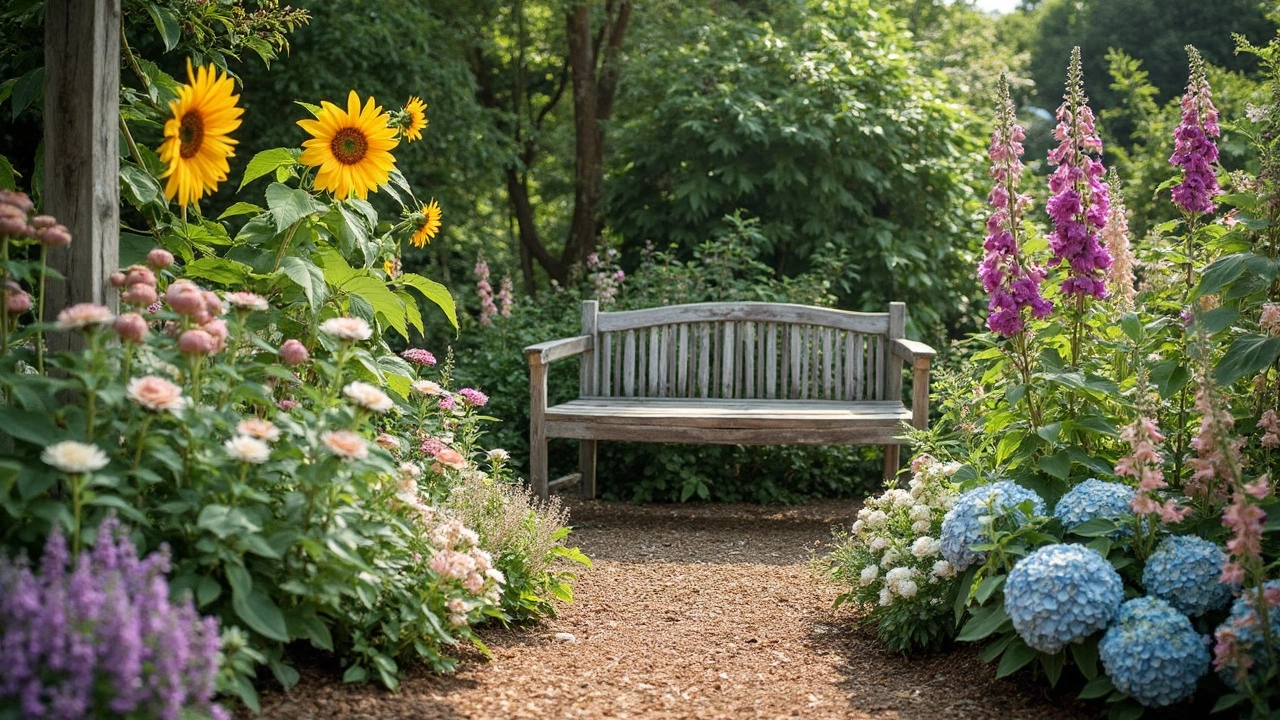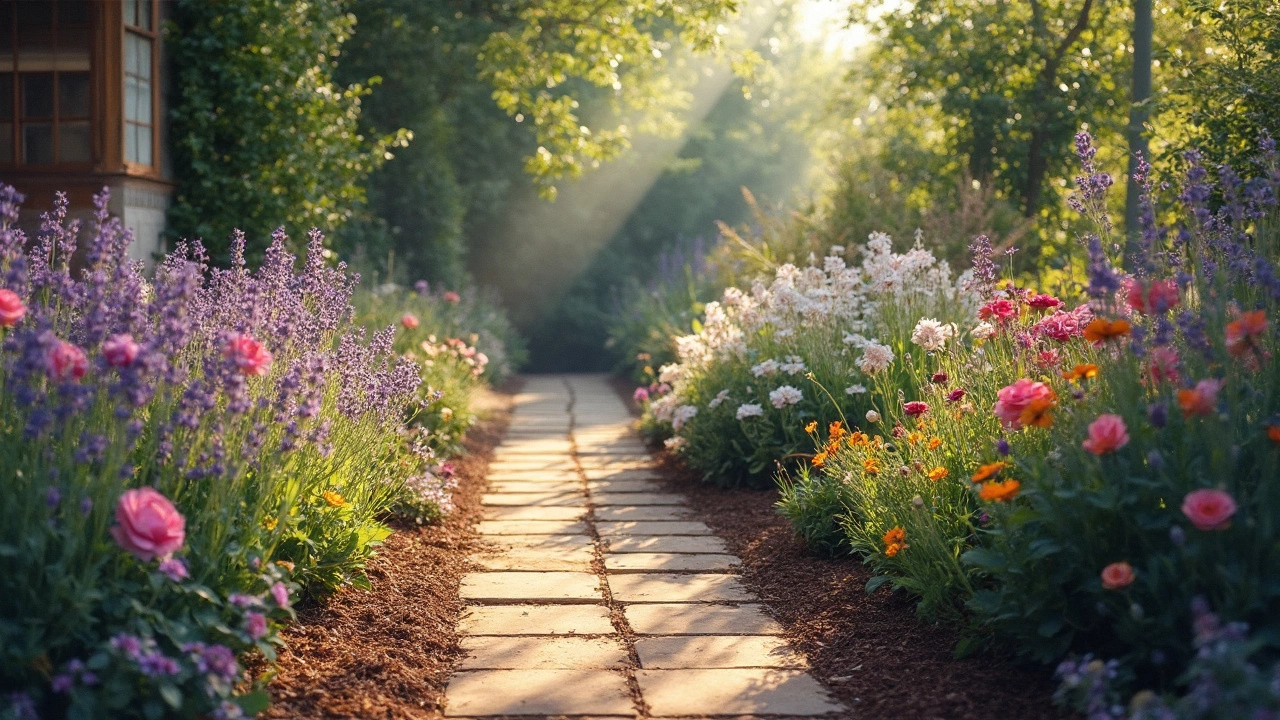Ever looked at your flower bed and thought, "I can do better"? Don't worry, you're not alone. Sprucing up your flower bed can feel daunting, but it doesn't have to be. Big transformations can come from small changes.
First, let's clear the clutter. A fresh start begins with pulling out those pesky weeds and any plants that didn’t survive the winter. You want a blank canvas to work with. Once your bed is clean, think about what you want to see. Bright and bold or calm and pastel? Your favorite colors can guide your plant choices, making your flower bed a reflection of your personal style.
- Start Clean: Prepping Your Space
- Choosing the Right Plants
- Layering for Visual Impact
- Finishing Touches with Mulch and Edging
Start Clean: Prepping Your Space
So, you want a flower bed that's the envy of the neighborhood? You're gonna need to get your hands a little dirty first. Kicking off with a clean canvas is key to any successful garden design. This means clearing out all the old and space-cluttering things like weeds, dead plants, or any forgotten gardening tools still buried from last year.
Begin by uprooting those pesky weeds. They’re not just visually unappealing; they can also steal nutrients and water from your plants. Once you're weed-free, take a good look at the soil. If it's really compacted or not looking its best, it might be time to give it some love. Adding organic compost can do wonders. It’ll boost the nutrients in your soil, improve drainage, and help your future plants thrive.
Don't forget to edge your flower bed. It might seem like a minor detail, but a clean edge gives your bed a defined boundary that’s like a picture frame for your plants. You can use a simple spade or get fancy with an edging tool.
Lastly, consider the size and shape of your flower bed. Maybe it’s been the same old rectangle for years. Now's the chance to switch it up—maybe into a curved bed or an asymmetrical shape to better fit your outdoor space. A simple layout change can add more interest and make your garden feel renewed without much effort.
Choosing the Right Plants
Picking the right plants for your flower bed is like choosing the right ingredients for a recipe. They need to complement each other and thrive in the same environment. First, consider the amount of sunlight your flower bed gets. Is it bathing in sunlight all day or tucked away in shade? Knowing this helps you decide on the plants that will actually flourish.
If your garden is sunlit, think about adding flower bed ideas like sun-loving plants such as lavender, marigolds, or daisies. These ones thrive in bright conditions. On the flip side, if you’ve got a shady spot, hostas, ferns, and astilbes are your best bet. They don’t mind the lack of direct sun and still look great.
Mixing plants with different flowering times ensures that something is always in bloom. Check out a bloom calendar to know when your picks will shine. That way, one thing fades, another blossoms, keeping your garden design lively all year round.
And don’t just think about flowers. Add some ornamental grasses or foliage plants for texture. They add layers and can make your flower bed look vibrant even when nothing’s in full bloom.
For the more visual planners, here’s a simple example:
| Light Conditions | Plant Suggestions |
|---|---|
| Sunny | Lavender, Marigolds, Daisies |
| Shady | Hostas, Ferns, Astilbes |
Don't forget about soil and water needs too. Some plants like it dry and sandy, while others prefer it moist and rich. Matching the plant type with your soil helps them thrive without much fuss. So, give your landscaping tips a boost by picking the right mix for your little patch of paradise.

Layering for Visual Impact
Want to make your flower bed stand out? Think like a painter layering colors on a canvas. Layering plants not only makes the bed visually appealing, but it also maximizes your garden space. The trick is to use different plant heights and textures to create depth and interest.
Start by placing taller plants at the back. These could be your sunflowers or delphiniums if you’re keen on bursts of color. In the middle layer, go for medium-height plants like daisies or campanulas, which will create a seamless transition. Up front, those low-growing plants like pansies or creeping thyme will complete the look and soften the bed's edge.
Here’s a handy tip: Aim for a tiered look, much like stadium seating. It ensures every plant gets enough sun and is visible. Remember, the choice of plants should match your local climate and the garden's sun exposure to thrive.
Don’t forget color coordination. Mixing complementary colors can amplify the visual impact. For instance, mix purple and yellow flowers for a vibrant look that'll catch the eye. Sounds more interesting already, right?
| Layer | Recommended Plants | Average Height |
|---|---|---|
| Back | Sunflowers, Delphiniums | 4-6 ft |
| Middle | Daisies, Campanulas | 2-3 ft |
| Front | Pansies, Creeping Thyme | up to 1 ft |
By layering your flower bed, you're not just planting; you're creating an experience for anyone who walks by. It's a simple yet effective way to make your garden pop. Plus, it's much safer than working on a ladder for a mural!
Finishing Touches with Mulch and Edging
Here's where things really get exciting in the world of flower bed ideas. Think of mulch and edging as the final touches that give your flower bed both a polished look and practical benefits. Mulch isn't just there to look pretty — it helps keep the weeds at bay, locks in moisture so you don’t have to water as much, and even keeps the roots nice and cool when the sun's blazing.
When choosing mulch, go for organic materials like wood chips or bark if you're looking for something natural. They break down over time, improving your soil. If you're into bold looks, colored mulch can add that pop you might be missing.
| Type | Pros | Cons |
|---|---|---|
| Wood Chips | Natural look, improves soil | Breaks down faster |
| Rubber Mulch | Long-lasting, lots of color options | Not organic |
| Rocks/Gravel | Doesn't break down, different textures | No nutritional benefits |
Edging is all about creating boundaries to keep your lawn and flower bed looking sharp. It prevents grass from crawling into your garden and keeps the mulch from spilling over. Options for edging range from simple plastic rolls to more decorative brick or stone borders. It's surprisingly easy to install — just dig a shallow trench around the perimeter of your bed and sit your chosen material in place.
Want to make it look seamless with your garden design? Choose colors and materials that echo your house or any existing garden structures. These small details can make your garden design feel intentional and well thought-out.
So, don't skip out on these finishes. They might seem minor, but they make a huge difference in both the look and upkeep of your flower bed. Plus, once everything's set up, you'll spend way less time weeding and more time enjoying the view.
